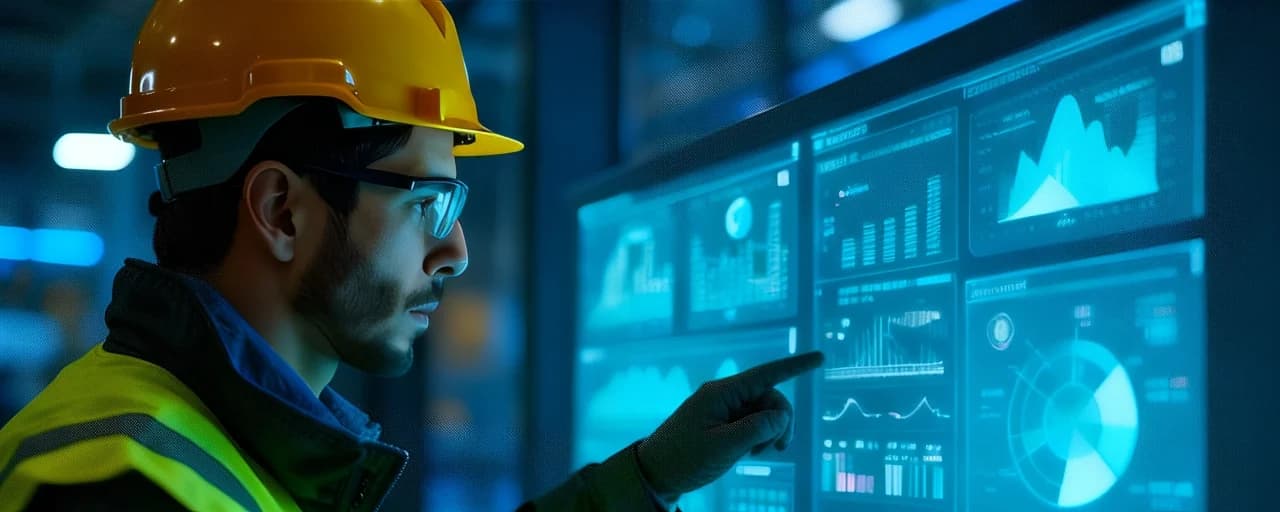Manufacturing Automation: How AI is Reshaping the Factory Floor

Manufacturing automation with AI is no longer optional. It has become the standard for companies that want to stay competitive, cut costs, and improve efficiency. According to recent projections, AI is expected to inject $3.7 trillion into global manufacturing by 2025, with more than 89% of manufacturers planning AI-based integration this year.
This shift is not just about faster production. It is about creating smarter, more resilient factories where machines learn, adapt, and optimize in real time. From predictive maintenance to supply chain visibility, AI is redefining how factories operate and scale.
Why AI is Driving Manufacturing Automation
Traditional automation relied on rigid, pre-programmed instructions. Machines could only perform repetitive tasks and struggled when conditions changed. AI changes this model by adding intelligence, flexibility, and self-learning to automation.
AI-powered automation uses machine learning, real-time analytics, and computer vision to adapt on the fly. Instead of waiting for manual adjustments, systems detect inefficiencies and optimize processes automatically. This makes production lines faster, safer, and more consistent.
Several factors explain why AI is driving this shift:
- Data availability: Modern factories generate enormous volumes of sensor and operational data. AI makes this data actionable by turning it into predictions and optimizations.
- Demand volatility: Manufacturers face fast-changing market conditions. AI supports flexible scheduling and production shifts without costly downtime.
- Labor shortages: Many industries struggle to fill repetitive or hazardous roles. Cobots and autonomous robots fill these gaps while humans focus on strategy and innovation.
- Sustainability goals: AI improves energy efficiency, material use, and waste reduction. This helps companies meet stricter compliance rules and ESG commitments.
- Global competitiveness: Manufacturers adopting AI gain speed, resilience, and cost savings. Those that delay risk falling behind more agile competitors.
In short, AI is not just improving automation. It is reshaping manufacturing into a smarter, adaptive system built for constant change.
Key Use Cases of Manufacturing Automation with AI
1. Predictive Maintenance
Unplanned downtime can cost manufacturers an average of $260,000 per hour, according to industry surveys. AI helps reduce this by monitoring sensor and machine data in real time. By predicting when equipment might fail, plants can schedule repairs before a breakdown occurs. Companies using predictive maintenance report up to 35% savings in maintenance costs.
2. Quality Control
Traditional inspection methods miss defects and slow production. AI-powered vision systems can detect even microscopic flaws on assembly lines. This reduces waste and ensures consistent quality, which is critical for industries like automotive, aerospace, and electronics.
3. Process Optimization
AI enables dynamic scheduling, allowing production lines to adjust instantly to new demands or supply shortages. For example, a line making consumer electronics can shift to a new model with minimal downtime, thanks to AI-driven process control.
4. Supply Chain Automation
AI helps manufacturers predict demand more accurately, optimize inventory levels, and coordinate with suppliers. This reduces waste and keeps production on track even during disruptions like raw material shortages.
5. Generative Design
With generative design, engineers input parameters such as weight, strength, and material. AI algorithms then create thousands of design variations. This speeds up R&D cycles and often results in lighter, stronger products.
6. Sustainability Gains
Energy efficiency is a growing focus. AI monitors energy usage across plants and suggests optimizations. This not only reduces costs but also helps meet sustainability and compliance goals.
The Role of Human-Machine Collaboration
The fear that AI will replace jobs is overstated. In reality, manufacturing automation shifts human workers to higher-value tasks.
- Cobots handle repetitive or dangerous jobs.
- Workers focus on strategy, design, and problem-solving.
- Training programs prepare staff to operate and supervise AI systems.
Instead of displacing workers, AI often augments their capabilities. This makes factories safer and more productive.
Market Growth and ROI of Manufacturing Automation
The global smart manufacturing market is projected to reach $880 billion by 2032. ROI is already proven:
- Predictive maintenance has cut costs by 35%.
- AI-driven scheduling increases production uptime.
- Quality control automation reduces defect rates by over 90% in some sectors.
Companies that integrate AI into automation see better agility, resilience, and competitiveness.
Practical Steps for Adopting Manufacturing Automation with AI
- Start with pilot projects
Begin with one use case such as predictive maintenance or quality inspection. Measure ROI before scaling across plants. - Integrate with existing systems
Ensure AI platforms connect with ERP, MES, and supply chain tools. Compatibility prevents silos. - Invest in training
Workers need upskilling to operate and interpret AI-driven systems. Training reduces resistance and improves adoption. - Prioritize cybersecurity
As factories become more connected, protecting data and equipment is vital. Implement layered security and monitoring. - Work with trusted partners
Choosing the right automation partner helps avoid costly trial-and-error. Vendors with proven AI integration experience save time and cost.
Why Work with Isometrik AI
Scaling manufacturing automation with AI requires a platform that can integrate across systems, manage real-time data, and deliver actionable insights. Isometrik AI builds automation solutions that help factories achieve predictive maintenance, dynamic scheduling, and AI-powered quality control.
Whether your goal is reducing downtime or building adaptive production lines, Isometrik AI provides the architecture and support to get there faster.
Conclusion
Manufacturing automation with AI is shaping the next decade of production. It reduces downtime, improves quality, drives sustainability, and builds resilience into operations. Companies that adopt now will cut costs, improve competitiveness, and future-proof their factories.
Isometrik AI can help manufacturers make this shift with real-world automation solutions built for scale. The future factory is not on the horizon—it is already here.